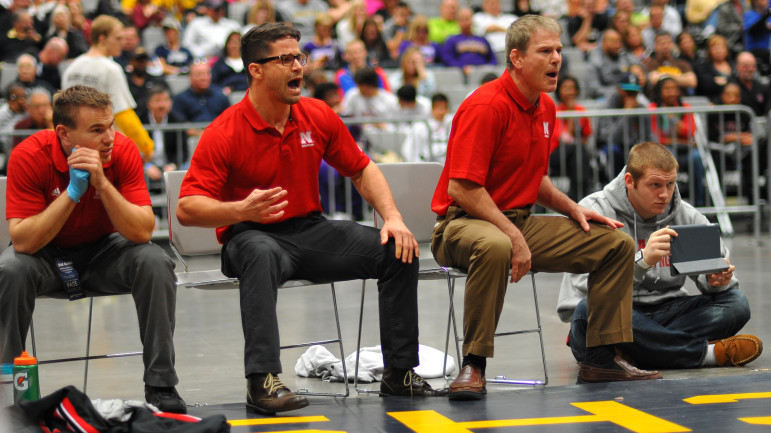

People Problems in a Small Media Organization (Part 1)

A good question is one that makes a person stop and think. Go beyond yes-no questions — and answers. Photo: Crlsbln in Flickr (CC License)
If you are leading a team in a small media organization, you need to get the best out of your people. Everyone has to be a contributor.
This is not just a selfish thing. You get the best out of people by helping them develop their own talents, overcome obstacles, and reach their own professional goals.
Ask Questions, Don’t Give Solutions
If a member of your team comes to you with a problem — for example, “I don’t think Karl is showing enough commitment to his work” or “The technical staff is being rude to our salespeople” — you will not help the person by providing a solution.
- First, the solution you propose might work for you but not for your colleague. You have different talents and experience.
- Second, providing a solution denies the person the chance to grow, to develop confidence in problem solving.
- Third, if the solution you propose is too hard for your colleague to execute, you will probably hear a lot of excuses and procrastination. Your colleague might not be able to figure out how to do it.
- Fourth, if your imposed solution fails, your colleague can avoid taking responsibility for its failure, which is a bad lesson.
Inside the Box
When a colleague comes to you with a problem, it usually means they see themselves as boxed in. Every solution looks impossible or has too many negatives. Your job as a coach or mentor in this situation is to ask questions that help the person to see beyond the barriers, to find alternative solutions, and to gain the courage to take action.
 Much of what follows comes from my own experience in working with employees in a news media company. Among my guides were John Whitmore’s book Coaching for Performance and an executive coach, Alan Dobzinski, whom I worked with for several years.
Much of what follows comes from my own experience in working with employees in a news media company. Among my guides were John Whitmore’s book Coaching for Performance and an executive coach, Alan Dobzinski, whom I worked with for several years.
The best way to help is to ask questions that raise the awareness of your colleague about the problem, to see it in new ways, to consider possibilities that did not occur to them. A good question is one that makes a person stop and think. This is the Socratic method of teaching. A yes-no question doesn’t usually help.
The Method
- Ask your colleague to describe the problem objectively, without opinions.
- Ask for evidence or data that supports this view of things.
- Dig deeper into the problem to see if your colleague is either missing a key element or is avoiding a discussion of the root cause of the problem.
- Ask the colleague to walk you through potential solutions and why they may or may not work.
- Ask who should be accountable and what your colleague is willing to do.
1. Questions for seeing the problem objectively.
- What have you seen that makes you think it’s a problem?
- How long have you observed this?
- What impact does it have on you or other employees?
- What do clients or colleagues have to say about this?
- How is it affecting you or the organization? In other words, how big a problem is it?
2. Questions about evidence.
- What are the factors that you see contributing to the problem?
- How do you measure them?
- What are the data that show how this is this affecting our organization? e.g., client retention, employee retention, revenues, profits?
- How reliable is this information?
3. Questions for going deeper.
- What are the risks of doing something?
- What are the risks of doing nothing?
- What are your worst fears about this situation?
- What could you do to overcome the obstacles?
4. Questions about what was considered or tried.
- What worked, what didn’t work, and why?
- If you haven’t tried any solutions, what held you back?
- Walk me through the possible solution scenarios, pointing out the strengths and obstacles of each.
5. Questions of accountability.
- On a scale of 0 to 100%, what percentage of the responsibility for this problem are you willing to accept?
- What are you willing to do to solve the problem?
- What do you think others should do?
- Who would you like to help you?
- What should be the first step, and when should it be taken?
- What do you think should be the deadline for action?
- What help do you want from me?
Our Two Slippery Problems
The two problems mentioned above were deliberately vague and slippery, which is exactly why they are difficult and typical: “I don’t think Karl is showing enough commitment to his work” or “The technical staff is being rude to our salespeople.”
We’ll tackle these two specific problems in the next post.
Consultant James Breiner is currently working to develop a new digital media product for a business news publisher. He is former director of the Global Business Journalism program at Tsinghua University in China, and founding director of the Center for Digital Journalism at the University of Guadalajara in Mexico. He has spent three decades in the newspaper business, including as publisher, editor, and investigative team leader. He is a member of the Volunteer Group, the GIJN board.










